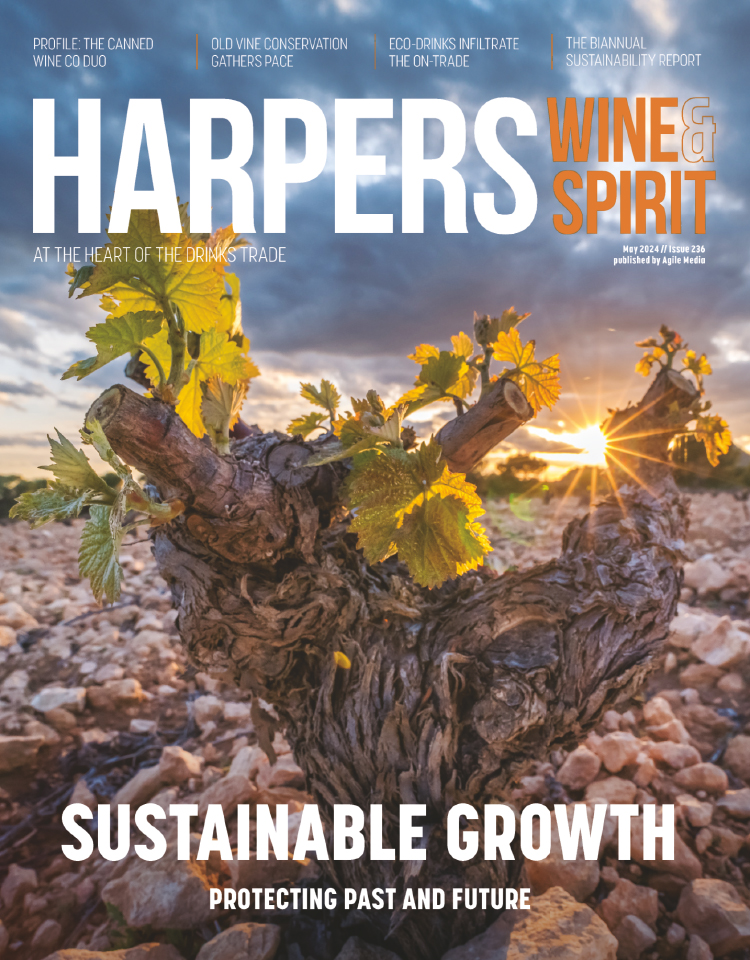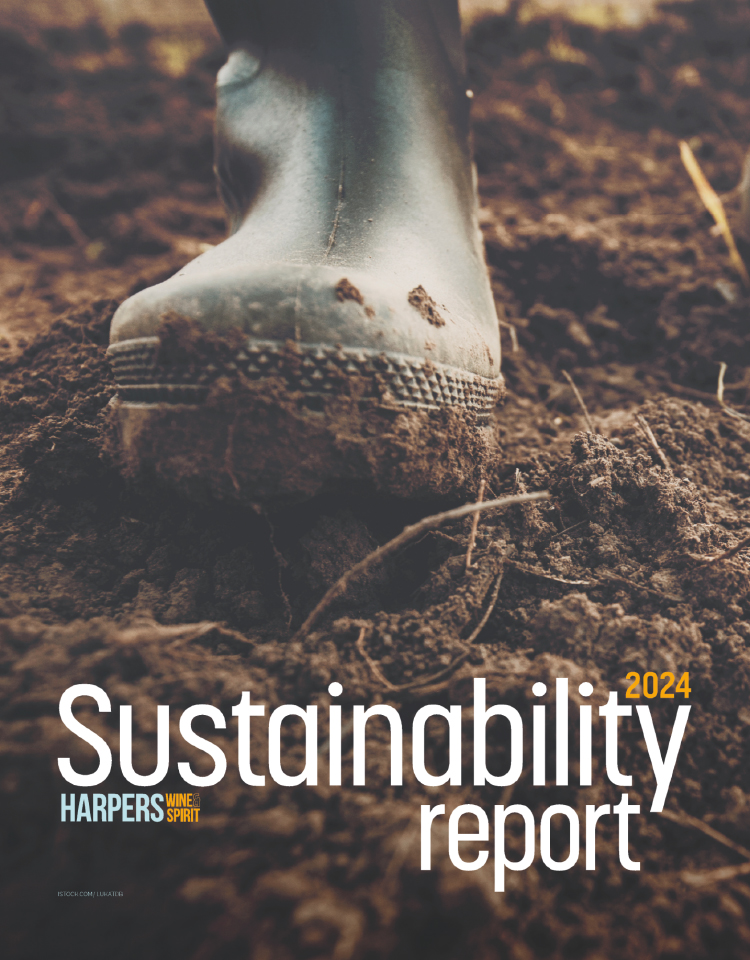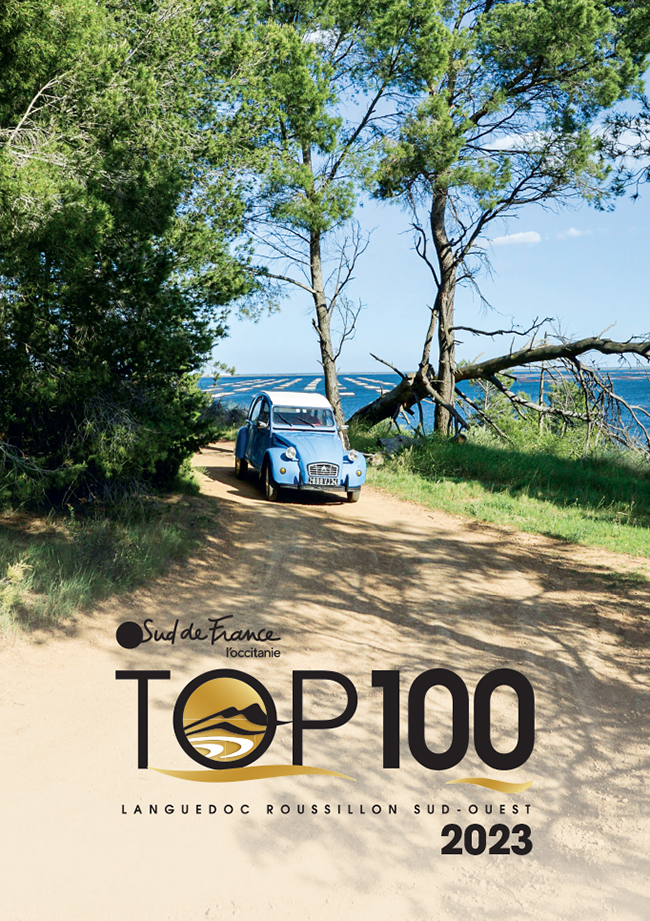
Washington Wine presents new strategy, with UK a key market
The Washington State Wine Commission landed in London on 24 April, signalling its alignment with several WA partners, revealing a new and more holistic strategy in promoting its wines.
The event, dubbed Wild WA, took place at Frameless in London, where an immersive visual spectacle formed the backdrop to wine pairing with several unique dishes by cutting edge Seattle chef Kerry Sear.
A tie in with tourism was clear, with State of Washington Tourism, Port of Seattle and Visit Seattle all on the same ticket. Washington’s producers are keen to persuade more visitors to discover Washington’s wines, and also make the journey from Seattle over the coastal Cascade Range to the eastern winemaking hinterlands.
Washington Wine executive director Kristina Kelley told Harpers: “We are going to be doing more of what you see today, really working across our agencies… also working with a lot of our commodity commissions, like the Dairy Commission, because we think about cheese and wine.
“So, it’s really about trying to present Washington State at the forefront, so you have your travel, your adventure, your wine, your culinary, so people get the full feeling of the state.”
Kelley added that it was important to get out and meet media and buyers, in markets such as the UK, also citing Canada, the Nordics, plus Japan and South Korea as key targets to expand the export reach of Washington wines.
Aside from its behemoth, Chateau Ste. Michelle, which now accounts for under 50% of production following recent rationalisation, some 90% of Washington’s wineries produce 5,000 cases or less.
“Many sell most of the wines through the cellar door, and we really need to focus on getting our wines beyond Pacific Northwest,” she said, continuing, “so the real challenge we have is ‘how do we get more Washington wine to leave the Northwest?’”
The result is a five-year strategic plan, focussing on distribution, unveiled in February, with “a first priority” being trade and distribution, backed by education for trade and wholesalers.
Kelley was open about the fact that Covid has been a real setback for the typically quite niche wines of Washington across North America, with the pandemic “really wiping out a lot of our restaurant professionals”. This has meant that many Washington-savvy on-trade staff now need replacing by newly educated advocates for the wines.
And, with Washington Wines being producer and grower-funded, various recent setbacks across the State’s industry have diminished levels of funding, also feeding into the cross-commission approach.
Nonetheless, Washington Wine is also undertaking a big viticulture and oenology research piece. It is supporting research via collaborative work between Washington State University, Oregan State and California’s UC Davis, with the likes of climate impact, smoke impact, soil health among the many areas being explored.
Of the wines shown at the London event, such as Syncline, Grosgrain, Reynvann, Gramercy Cellars and Hedges Family Estate (among others), Kelley agreed that these represented a ‘first wave’ of exporters, with more wineries now needing to build a critical mass overseas.
“This will be prioritised, but we also need to educate our wineries as to what is means to be in the export market, and there is still that learning curve,” she said.
“It’s good for the industry and its good for building awareness about their wines [back in Washington]… but we need to raise awareness for Washington wine overall, so look at how we distribute outside of the state.”
The well-established quality of Cabernet Sauvignon, Merlot and Syrah from Washington means that these red varieties will continue to lead the charge, and not least with the high prices for the former from neighbouring California.
As Harpers reported (now free to read) in our September 2023 issue, however, Washington also remains a hotbed of evolution, with a host of Mediterranean varieties, from Grenache and Tempranillo to Nebbiolo, Assyrtiko and Ribolla Gialla, among the 80+ varieties now produced here.
“We’re going to see more of those wines going into the market and we’re going to see more of the great experimentation and innovation,” Kelley enthused.
With Chateau Ste. Michelle having shed a significant number of its previous supplier-growers, with quite some impact on the industry, there has been some negative press about Washington and Kelley admits that the next couple of years will present some challenges. However, she also makes the point that one resulting realignment will be a switch in focus from volume to more niche quality wines. And, longer term, that arguably sits better with the aforementioned scale of most producers in the State.
“We have an industry that is very supportive, an industry that has come together,” Kelley says.
An interim programme, and one that will certainly help, is seeing Washington growers sell grapes to British Columbia wineries over the border in Canada, where earlier severe frosts mean that there will be little to harvest in 2024. It’s yet another example of the mindset in this plucky, can-do winemaking corner of the world.








